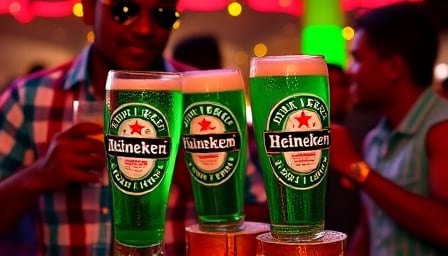Heineken’s Stock Tumbles While Competitors Rally: Analysts Split Between Optimism and Alarm
Heineken NV’s share price has been in a state of flux, rattled by a confluence of regional headwinds that have stoked uncertainty among investors. The Dutch brewer’s valuation has suffered under the weight of difficult operating environments in Brazil and the United States, compounded by a disappointing sales trajectory in Mexico. Even as Citi maintains a bullish stance on the company in the long run, the research team has issued a stark warning about the near‑term outlook, citing the cumulative impact of these market challenges.
Regional Pain Points Undermine Momentum
- Brazil and the United States: The company’s core growth engines in these markets have stalled, with macro‑economic pressures, tightening regulations, and shifting consumer preferences eroding margin expectations. The resulting volatility has translated directly into share price volatility.
- Mexico: Weak sales figures, likely a symptom of intensified local competition and price sensitivity, have further dented the company’s earnings outlook. Analysts are calling for a strategic reassessment of the Mexican portfolio.
Despite these setbacks, Heineken’s brand equity remains a defensive anchor. Its global portfolio, spanning from flagship lagers to niche craft offerings, continues to command premium pricing in most markets. The company’s focus on innovation—particularly in low‑alcohol and flavored variants—coupled with a robust sustainability agenda, positions it for long‑term resilience.
Citi’s Divergent Recommendations for the Industry
While Heineken faces short‑term turbulence, Citi’s buy recommendations for Anheuser‑Busch‑InBev and Carlsberg illustrate a broader market optimism for the sector. Carlsberg, in particular, is projected to enjoy a surge in valuation following a strong seasonal lift in the United Kingdom. Management has hinted at the possibility of raising full‑year guidance during the upcoming capital markets day, a move that could further lift investor sentiment.
The juxtaposition of these recommendations underscores a critical point: the beer market is not homogeneous, and strategic positioning matters. Competitors that have capitalized on regional strengths and leveraged digital transformation appear to be rewarded, while those that lag behind in adapting to local dynamics face downside risk.
Supply Chain Excellence as a Differentiator
Heineken’s recognition by Gartner as one of the world’s top 25 supply chain operators cannot be ignored. The company’s digital-first approach—employing predictive analytics, blockchain traceability, and sustainable sourcing—has earned it a reputation for efficiency and resilience. Nonetheless, this operational prowess must translate into market gains; otherwise, it risks becoming a mere footnote in a competitive narrative that favors execution over reputation.
The Chinese Market: A Mixed Bag
China’s beer landscape is rebounding, with local titans Huarui and Yanjing reporting robust growth. Yet industry analysts warn that the sector may confront a structural shift: declining overall consumption paired with a consumer pivot toward premium and craft offerings. For Heineken, this presents a dual challenge: maintaining volume while adapting to a premium trend that could erode its cost advantage.
In sum, Heineken’s current trajectory is a cautionary tale of a global brand grappling with fragmented market realities. While analysts maintain confidence in the company’s long‑term fundamentals, the immediate outlook is fraught with uncertainty. Investors and industry observers alike should watch for how Heineken navigates regional headwinds, leverages its supply chain strengths, and positions itself amid a market that increasingly rewards agility and premium focus.
